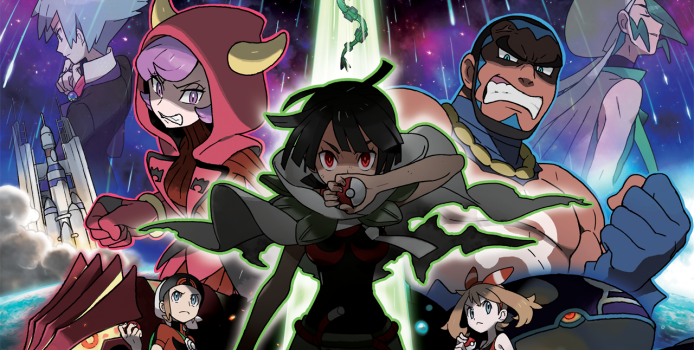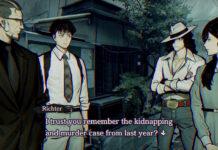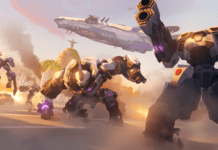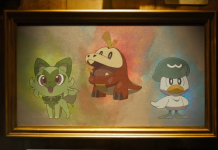Pokémon, since it’s inception in 1996 in Japan, and 1998 in the rest of the world, has expanded across the world with each game being more innovative than the last. With a new major release every single year for the last decade, some of these releases were remakes of older titles.

Pokémon Fire Red & Leaf Green released in 2004 as a full-fledged Generation 1 remake. This one, when compared to the more current remakes, didn’t add a whole lot other than compatibility with the Hoenn games and access to a small handful of Generation 2 Pokémon. When GameFreak transitioned from the Game Boy Color to the Game Boy Advance, they couldn’t come up with a solution for transferring your Pokémon from any of the Generation 1 or Generation 2 games to the Generation 3 titles. With this in mind, Fire Red & Leaf Green were born bringing the Kanto Pokémon not present in Ruby and Sapphire over to the third generation. Along with this a lot of movesets for these Pokémon were also changed due to having a much larger pool of moves for Pokémon to learn by this point in the franchise. Other than moves, aspects such as Pokémon having Abilities and Natures are also now readily available for all the first generation Pokémon. Remakes down the line would keep the same changes and add more on top of such.

Pokémon Heart Gold & Soul Silver released in 2008, bringing the Generation 2 games into the Nintendo DS era. After the success of Pokémon Diamond & Pearl, GameFreak capitalized on the engine by adding remakes of Pokémon Gold & Silver to the table. These remakes not only provided even more quality-of-life improvements (the largest one being the infamous Physical / Special Split introduced in Diamond & Pearl) but also provided a much better resource of obtaining Generation 2 Pokémon than the previous generation. These remakes provided many new players with their first time experience in the Johto region, much like Fire Red & Leaf Green did for the introducing new players to the Kanto region. Only this time due to the nature of the second generation titles, Heart Gold & Soul Silver brings BOTH Johto and Kanto to the table, so the players who experienced Kanto through Fire Red & Leaf Green can see what the region looks like after a few years have passed. On a personal note, these remakes are probably my favorite ones in the franchise. Till this day, I have no idea if that’s from my love of the second generation as a whole or that these remakes truly are some of the best in the franchise. Between you and I, I think it’s a bit of both.

Pokémon Omega Ruby & Alpha Sapphire are the third remakes in the series released in 2014, this time bringing the Generation 3 games to the Nintendo 3DS and the first time being full-fledged 3D remakes of the any Pokémon game up until this point. On top of the same quality-of-life improvements the prior two remakes brought, Omega Ruby & Alpha Sapphire actually bring Pokémon Contests back for the first time since the 4th generation. When Pokémon X & Y were released, not only did they not bring the Battle Frontier with them (a staple of post-game content in Pokémon games thus far) but they also did not see the return of Contests. Not only do Omega Ruby & Alpha Sapphire bring Contests back but they also include more features and provide a much larger pool of moves to use to increase your chances of winning. This time around the remakes also play a role in revamping the story; they include one of the added gimmicks introduced in this generation known as Mega Evolution. You can find more info about Mega Evolution more in depth here. More Mega Evolutions were introduced exclusively in Omega Ruby & Alpha Sapphire, and even play a core role in the story making a form of Mega Evolution called Primal Reversion possible for both games Legendary Pokémon. Alongside adding a lot to the original story of Ruby & Sapphire, these games also add a full post-game story involving the Legendary Rayquaza, which of course they made this Pokémon able to have the gift of Mega Evolution, as well as a brand new character not seen in original games, Zinnia. You can find out more about Zinnia and the story behind the Delta Episode here.
As of of publishing this, Omega Ruby & Alpha Sapphire have received a ton of flack over the past few years. Much of the criticism comes from the lack of of Battle Froniter (as mentioned before, it was known as a post-game staple), Mega Evolution’s involvement in the story, and it overall “ruining,” what was special about the Hoenn games as a whole. I heavily disagree with this sentiment, as just like with Heart Gold & Soul Silver, these remakes provide a much more broad selection of Pokémon, the ability to optimize your team better, the Delta Episode, among the many brilliant ideas brought in by these games. Not only is the overall soundtrack a lot more appealing, but what makes these games special in their own right is how they really pushed the boundaries of the traditional Pokémon style at the time. This is the first time we get to fly across the map on the back of a Pokémon, Final Fantasy style, without the use of an HM, and find special spots future generation Legendary Pokémon reside only accessible using this method. Both of these games will always hold a special place in my heart because they are absolutely some of the best Pokémon games in the franchise.

Pokémon Brilliant Diamond & Shining Pearl came out very recently on November 19th, 2021 as remakes of the Generation 4 Pokémon games. Now for the 3RD time (see: Pokémon Let’s Go Pikachu & Let’s Go Eevee), these games bring a generation previously sprite-based into a 3D space on one of the latest video game consoles, the Nintendo Switch. These games are the 2nd time a Pokémon remake was brought to a home console as opposed to a more updated handheld (though, you can argue that the Switch is a hybrid console– both being a handheld and a home console). These remakes are ones that more closely resemble their original counterparts. They bring back the top-down style gameplay seen in every mainline Pokémon game up until Pokémon Black 2 & White 2, and are the first games to emulate this style in 3D. Rather than being 4-directional like the sprite based games, this game is 8-directional meaning you can walk diagonally. Much like with Pokémon Omega Ruby & Alpha Sapphire, these remakes include much more fleshed out post-game content including several quests designed to catch every Legendary from Generation 1 to 3, and the huge one that takes a note out of what rom-hacks have been doing for over a decade; being able to catch every single Pokémon in the National Dex natively in a single Pokémon game (baring a few version exclusives here and there). The thing to keep in mind with these remakes is much like the previously mentioned Pokémon Let’s Go Pikachu & Let’s Go Eevee, these games skim down the National Pokédex to the 493 Pokémon available in only the first four generations. This means that you cannot use Pokémon introduced in Pokémon Black & White, all the way to ones introduced in Pokémon Sword & Shield: The Crown Tundra. In my opinion, these remakes were absolutely necessary for bringing Pokémon Diamond & Pearl to life. The original games ran so painfully slow, and were balanced so incredibly awful that going back to them over the remakes feels nearly impossible. A lot of these problems were fixed in Pokémon Platinum, but seeing these get the remake treatment and put in a much better engine makes these games feel authentic and more polished. These remakes do still have their own set of problems that unfortunately are completely introduced on their own, but none of these issues come close to the hassle playing the originals come with. Even if all they did was slap a silly dog (or duck) shaped band-aid on one of the balancing issues, I can finally say I can use a Fire-type Pokémon that isn’t the starter or a horse in the Sinnoh region on my journey.




